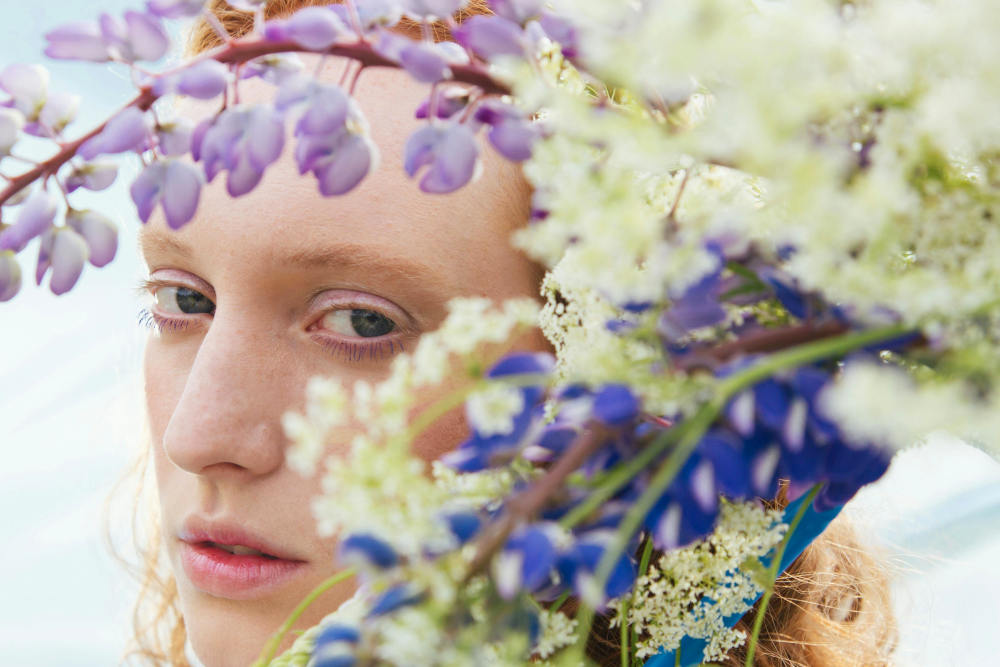
When the sun reaches its highest point in the sky, people across cultures have long marked the turning of the year with fire, feasting, and ritual. Midsummer—also known as the summer solstice—was considered one of the most magically charged times of the year in folk tradition. The abundance of light, the blooming of herbs, and the warmth of the season made it a moment when nature’s power was at its peak.
For centuries, communities gathered to kindle bonfires, collect mystical herbs, and perform rituals for fertility, love, and protection. These practices were not only celebrations of summer but also acts of magic designed to harness the strength of the season.
In this article, we’ll explore the folk magic of Midsummer, from fiery rites and protective charms to the herbal lore and seasonal superstitions that shaped life in villages across Europe and beyond.
Panaprium is independent and reader supported. If you buy something through our link, we may earn a commission. If you can, please support us on a monthly basis. It takes less than a minute to set up, and you will be making a big impact every single month. Thank you!
Why Midsummer Was Spiritually Significant
Midsummer was seen as a threshold season, when the balance of light and darkness shifted.
-
The sun at its peak: Days were longest, and light was associated with fertility, healing, and protection.
-
Season of abundance: Crops were growing strong, animals were thriving, and wild herbs reached their most potent stage.
-
Liminal time: Just as at midwinter, the veil between worlds was believed to thin, making spirits and magical forces more accessible.
For these reasons, Midsummer became associated with rituals of power—celebrations that combined joy with protection against unseen dangers.
Bonfires: Flames of Fertility and Protection
Fire as a Sacred Force
Bonfires were at the heart of Midsummer celebrations. Lighting great fires on hillsides or village greens symbolized the strength of the sun and was believed to channel its life-giving energy.
Protective Uses
-
People leapt through the flames or ran through the smoke to purify themselves and ensure health.
-
Livestock were driven between fires to guard against disease.
-
Embers or ashes from the fire were taken home to protect hearths and barns.
Fertility Rites
Bonfires were also linked with fertility and prosperity:
-
Couples jumped over the flames hand in hand to ensure happiness in marriage.
-
Farmers scattered ashes in their fields to encourage a good harvest.
In many traditions, the fire was not just symbolic but magical, carrying blessings wherever its sparks landed.
Midsummer Herbs: Nature’s Magical Pharmacy
Herbs gathered at Midsummer were considered especially powerful. Folk belief held that the plants absorbed the peak strength of the sun, making them more effective for healing and magic.
Common Midsummer Herbs
-
St. John’s Wort: Called “chase-devil,” it was gathered at dawn and hung over doors or carried as protection against evil spirits.
-
Mugwort: Worn in garlands or belts for protection and visionary dreams.
-
Yarrow: Used in love charms and divination, especially to reveal one’s future spouse.
-
Fern: In Slavic tradition, the mythical “fern flower” bloomed only at Midsummer’s night, granting wealth and luck to those who found it.
-
Elderflower: Associated with blessings and the protective spirit of the elder tree.
Ritual Gathering Practices
-
Herbs were often picked in silence, at dawn or midnight, to preserve their power.
-
Dew collected from Midsummer morning was believed to heal and beautify.
-
Bouquets of herbs were dried and kept through the year as talismans.
Seasonal Rituals and Divination
Midsummer was filled with rituals meant to connect humans to nature’s cycles and reveal hidden knowledge.
Love and Marriage Divination
-
Young women floated flower wreaths on rivers; the path the wreath took predicted their romantic future.
-
Yarrow under the pillow was said to bring dreams of a future husband or wife.
-
Rolling naked in Midsummer dew was thought to ensure beauty, fertility, and luck in love.
Spirit and Ancestor Connections
-
Fires were sometimes seen as guiding lights for wandering souls.
-
In some traditions, offerings of bread, milk, or honey were left for ancestral spirits and land guardians.
Protective Charms
-
Homes were decorated with greenery, especially birch branches and garlands, to bless the household.
-
Children wore small amulets of herbs to protect them from illness and misfortune.
Cross-Cultural Midsummer Traditions
Though details varied, Midsummer rituals were widespread across Europe and beyond.
Scandinavia: Midsommar
In Sweden, Midsommar was celebrated with maypoles, garlands, and feasting. Folk believed that water and plants held special power, and wreaths of flowers were worn for both joy and protection.
Baltic Regions
In Latvia and Lithuania, Midsummer (Jāņi) featured bonfires, songs, and magical rituals. Leaping over fires, wearing fern crowns, and drinking beer were all part of ensuring health and abundance.
Slavic Countries
Midsummer, or Kupala Night, was a festival of fire and water. Youths leapt over bonfires, while girls floated flower wreaths down rivers. Couples who found the elusive fern flower were said to gain wealth and happiness.
Celtic Lands
In Celtic tradition, Midsummer marked a turning point of the year. Fires were lit on hilltops, herbs were gathered, and rituals of protection were carried out to honor the power of the sun and safeguard crops.
Symbolism of Fire, Water, and Greenery
Midsummer rites often combined the three great natural elements:
-
Fire represented the sun’s energy, purification, and protection.
-
Water (dew, rivers, lakes) symbolized fertility, cleansing, and divination.
-
Greenery (herbs, garlands, branches) embodied nature’s peak vitality and abundance.
Together, they expressed the belief that at Midsummer, all elements worked together to bless humanity.
Midsummer Taboos and Warnings
Not all Midsummer beliefs were joyous. Folk magic also included warnings:
-
Evil spirits were thought to roam freely on Midsummer’s Eve, attracted by the heightened energy of the season.
-
Witches were believed to gather herbs or ride with spirits under the midsummer moon.
-
Protective rituals, such as wearing St. John’s Wort or carrying iron, were meant to guard against misfortune.
These taboos highlight how Midsummer was seen as both powerful and perilous—a time when magic could be used for good or harm.
Midsummer in Christianity
With the spread of Christianity, many pagan Midsummer customs were reinterpreted. The festival of St. John the Baptist (June 24) was layered onto earlier solstice rites. St. John’s fires replaced pagan bonfires, while gathering St. John’s Wort gained new symbolic meaning.
Despite the Christian overlay, the old magical practices survived, continuing as folk traditions well into modern times.
Modern Revival of Midsummer Magic
Today, Midsummer festivals are still alive in many parts of the world. Beyond cultural celebrations, modern spiritual practitioners often revive folk rituals to connect with nature’s cycles:
-
Lighting candles or bonfires for energy and purification.
-
Creating herbal charms with seasonal plants.
-
Meditating outdoors during sunrise or sunset to honor the solstice.
-
Collecting morning dew as a symbolic blessing.
These practices demonstrate how ancient customs can still bring meaning in the modern world.
Conclusion
For centuries, Midsummer was more than just the longest day of the year—it was a spiritually charged season when fire, herbs, and ritual actions were believed to shape destiny. Bonfires lit the night with fertility and protection, herbs gathered at dawn carried magical potency, and rituals honored the turning of the year’s cycle.
These old superstitions remind us that midsummer was not only about survival but about joy, love, and the celebration of life at its fullest. Whether through a simple wreath of flowers, a shared feast, or a candle lit at sunset, Midsummer remains a time to reconnect with nature’s magic—and to carry forward the traditions of abundance and protection that sustained our ancestors.
Was this article helpful to you? Please tell us what you liked or didn't like in the comments below.
About the Author: Alex Assoune
What We're Up Against
Multinational corporations overproducing cheap products in the poorest countries.
Huge factories with sweatshop-like conditions underpaying workers.
Media conglomerates promoting unethical, unsustainable products.
Bad actors encouraging overconsumption through oblivious behavior.
- - - -
Thankfully, we've got our supporters, including you.
Panaprium is funded by readers like you who want to join us in our mission to make the world entirely sustainable.
If you can, please support us on a monthly basis. It takes less than a minute to set up, and you will be making a big impact every single month. Thank you.































0 comments